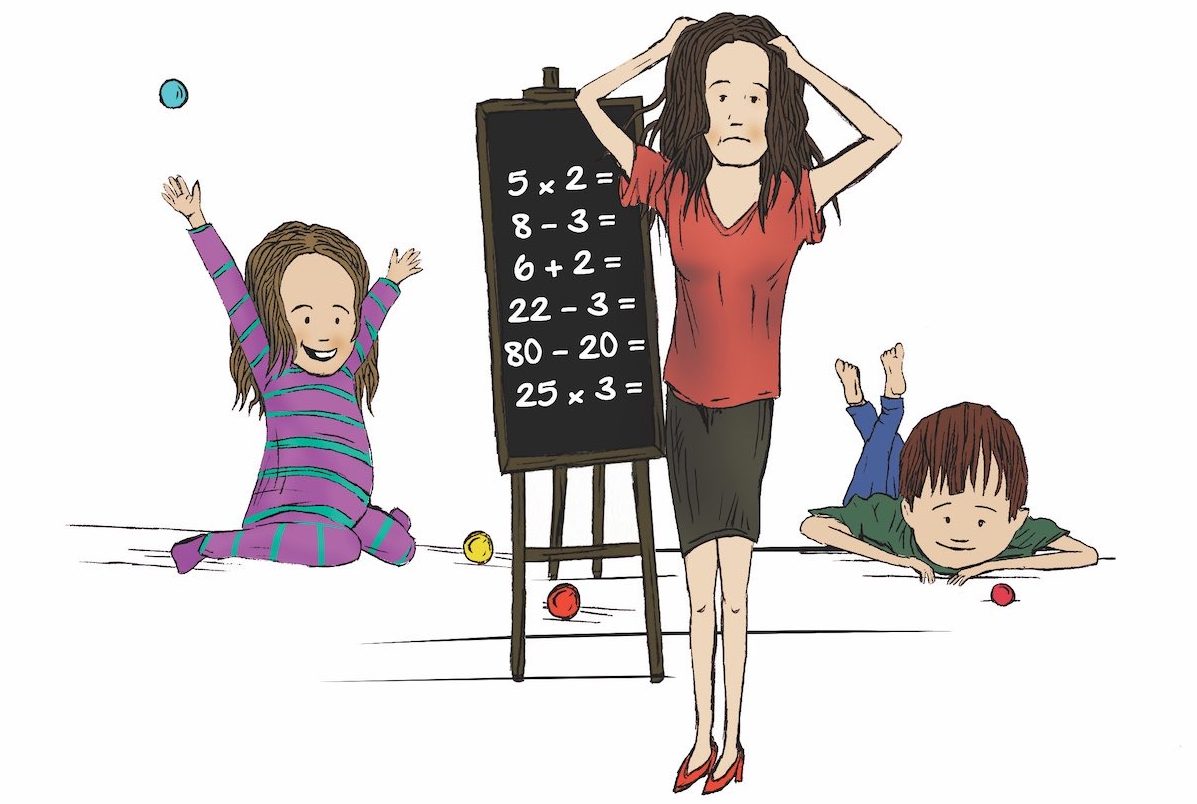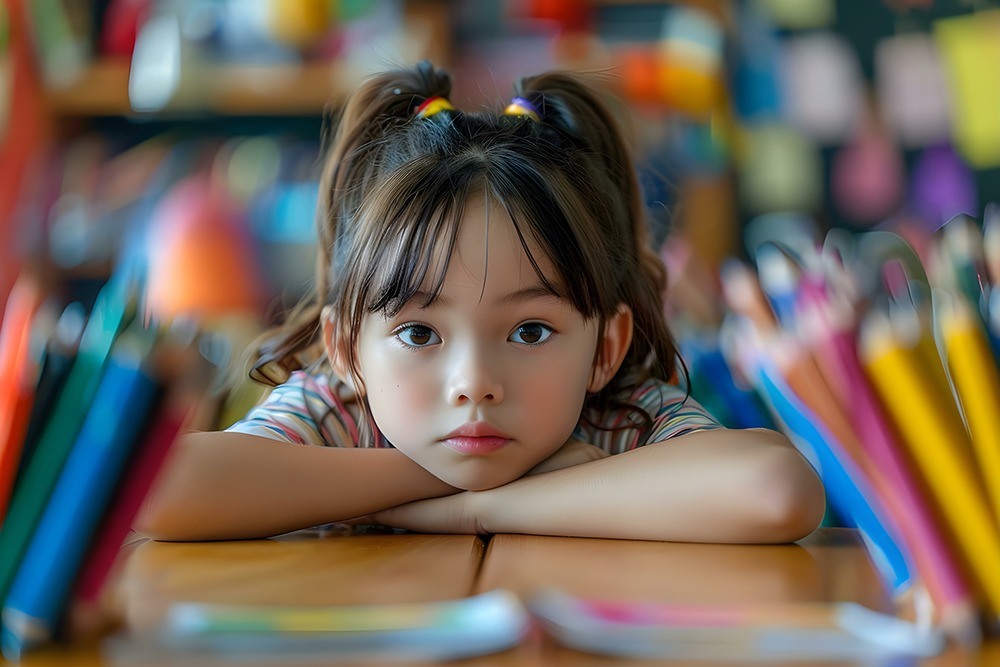
How bad can homeschooling in lockdown really be? Columnist KATE MEIKLE has promised this time to “to play it cool and calmer; we will do what we can at home and I will try and practice more patience with my children and their school”. We’ll see…
BEYOND the inconvenience, worry and disruption to work and social life in lockdown, many Canberrans have added the daunting reality of homeschooling their children for an indefinite amount of time.

Snapping back into lockdown brings some big feelings back to the surface for many parents. I’ve already seen the fear, stress, anger and worry I feel reflected back at me through my regular What’s App group chats with mum friends.
They say we can’t control a pandemic but we can control our reaction to it – so this time, I’m promising myself to play it cool and calmer; we will do what we can at home and I will try and practice more patience with my children and their school.
Experience has taught us that lockdowns end eventually and that “normality” for our children will return in the future – but when? And how long will it last until the next round of restrictions? The uncertainty weighs us down.
In the meantime, we find ourselves returning to logging on to Zoom classroom meetings, finding Google backpack passwords, printing out worksheets, downloading the Reading Eggs app and hoping we don’t have to do too many messy science experiments.
We do all of this (and more) with love and our best energy – even if so many of us are simultaneously trying to fit in our own work or look after younger children and infants, too. It’s multitasking to the extreme.

During last year’s school closure, my son had only just started kindergarten. He couldn’t read and didn’t really want to learn. It was a tense time, as I pushed my nervous energies into “trying” to be some sort of over-achieving homeschool mum while entertaining his three-year-old “boss baby” sister and taking work phone calls.
The more I pushed him to do his sight words, the more he resisted. Needless to say, “Mum school” was not a success.
But by the end of it, we did get to some sort of routine that worked for us. We didn’t tick every box of work that the teacher sent to us (although it was made clear that the school didn’t expect everything to be done!) but we kept in touch with the expectations, and managed to keep up to speed with his learning outcomes.
I am pleased to say, my son can now read. I won’t take any credit for that – he did the work – but I will say I have learnt a lot about the complex science involved with teaching a young person to read, and have endless respect for teachers.
Towards the end of last year my brother, Dylan, asked me to collaborate with him on a book for parents entitled “Learning in Lockdown”. I revisited the columns that I had written during the 2020 lockdown period and we published some of my personal insights.
I remember laughing with Dylan on the phone and wondering if the book would be quickly redundant in Australia, but 2021 had different plans in store for all of us.
Dylan lives in Singapore with his wife and two primary school-aged girls. As a teacher and school counsellor and having experienced school closure in Hanoi for three months, navigated an overseas move in July last year to Singapore (which included hotel quarantine) and like us has experienced ongoing snap lockdowns in Singapore – he is very well placed to share some ideas and reassurance on supporting parents with young children during school closure.
His top tips from learning in lockdown?
Seize the day
Kids are freshest in the mornings – which is why most primary schools kick off the day with dedicated literacy learning blocks of time. Maximise focus and energy by delaying the start of your working day (if you can) and setting your children’s learning up first. If your child has a productive morning then the afternoons can be low-stress and less directed by you.
Catch and release
“Catch and release” is a fishing technique where caught fish are unhooked and released back into the wild. When you are monitoring your child’s learning at home you should seek to provide them with opportunities to come to you for help and guidance, but then try to “release” them to a period of independent work. How long that period is, before you “catch” them again, is dependent upon their age. This is what happens in classrooms – obviously teachers don’t sit with one child all day. Instead, they cycle through their classroom, connecting with each student, providing help and then moving on. In short: you shouldn’t have to sit with your child all day nor should you imagine that they can manage their learning without your guidance.
Time limits are fair and motivating
Setting realistic time limits for working can be key to helping kids stay on task. Class periods in primary schools are usually 40 or 50 minutes long and children have the ability to self-regulate by moving around and getting water when they need to in order to work more effectively. They also have the motivating energy of sitting among their peers in a stimulating environment.
For example for a grade two student: use a timer to set a 15 to 20-minute work session and then lead a three-minute break (drink water, jumping jacks, quick chat etcetera) and then time another 10 to 15-minute work session followed by a longer break (a home “recess”).
Keep it upbeat and invest in levity
In normal classrooms teachers use rigour, high expectations as well as humour and empathy in equal measures. Don’t underestimate the power of a few jokes and a “brain break” along the way. Teachers never coerce children to learn. If your child is having a tough day and the learning’s not clicking – feel free to just pack it up and “live to teach another day”. Mental health and positive relations in your family should trump schoolwork.
I think I still have an unopened jar of cream of tartar in the kitchen pantry from last lockdown when I thought I would make playdough from scratch with the children – well that didn’t happen! Might be helpful this lockdown.
This time round, my advice to parents is just give yourself a break. Good luck!
“Learning in Lockdown: A Parent’s Guide to Helping Young Children Thrive During Campus Closure” is available in paperback and ebook format from all major online book retailers.
Who can be trusted?
In a world of spin and confusion, there’s never been a more important time to support independent journalism in Canberra.
If you trust our work online and want to enforce the power of independent voices, I invite you to make a small contribution.
Every dollar of support is invested back into our journalism to help keep citynews.com.au strong and free.
Thank you,
Ian Meikle, editor




Leave a Reply